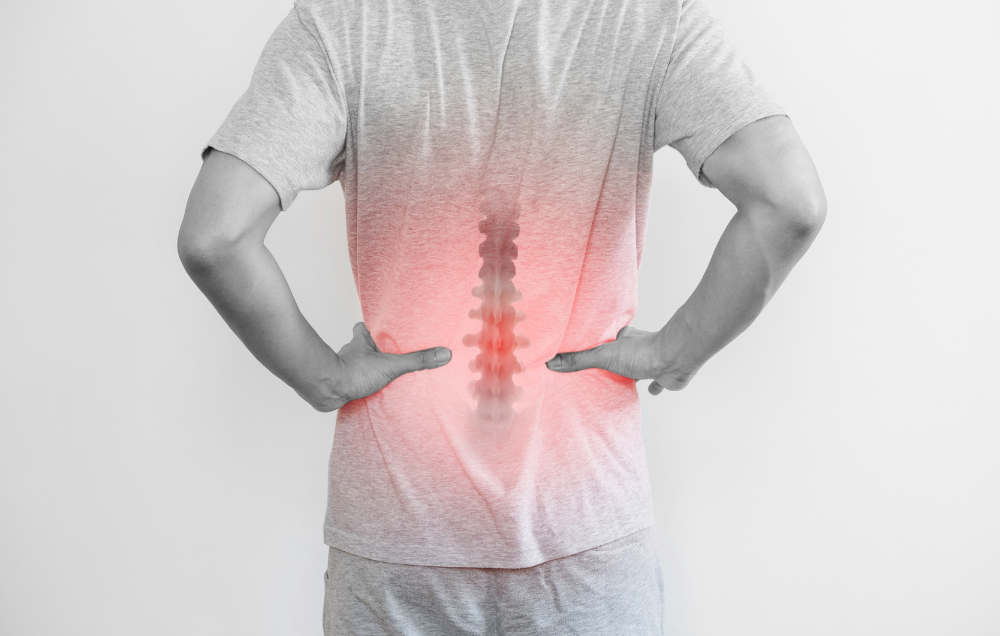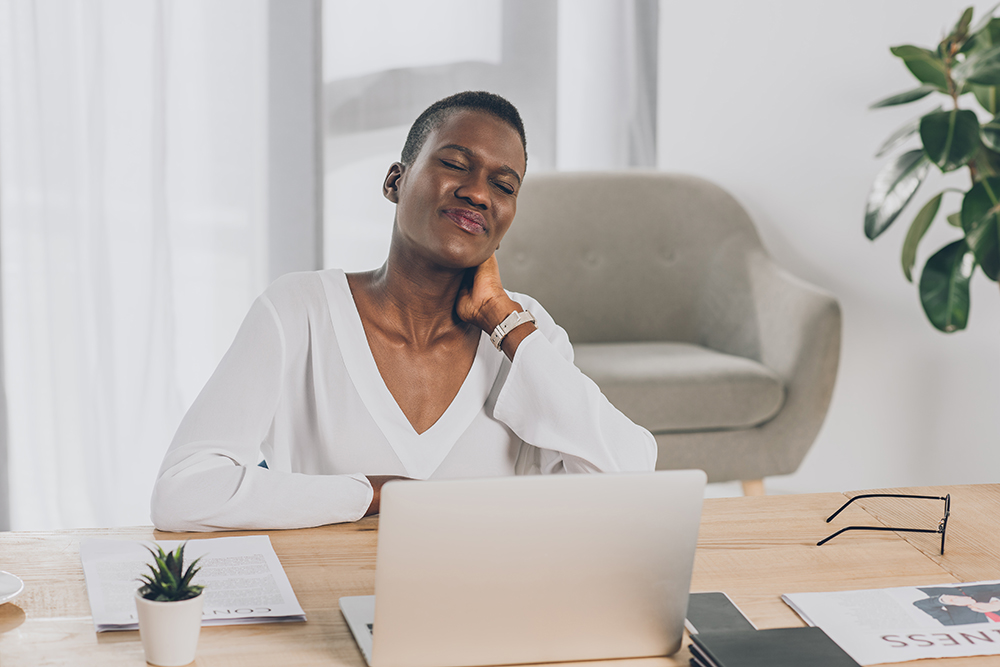Contents
Dealing with chronic back pain is a debilitating yet surprisingly common experience for many people. In fact, lower back pain is the single leading cause of disability globally. Even minor back pain can disrupt your day-to-day activities, and severe pain may prevent you from doing even basic tasks.
Unless you’ve had a recent injury, it may be difficult to determine what caused your chronic back pain. Overexertion, inflammation-based diseases and poor posture can all contribute to chronic back pain. However, you don’t have to let that pain control your life. Let’s take a look at some common causes of chronic back pain and how physical therapy can help you live a less painful life.
Common causes of chronic back pain
You may think that a single event or injury causes chronic back pain, but it can be challenging to pinpoint a single root cause. Oftentimes, chronic back pain is caused by several issues and increases over an extended period of time. Here are a few possible conditions that may be contributing to your chronic back pain:
- Muscle deconditioning — Also called muscle atrophy, muscle deconditioning is a very common cause of chronic back pain. It occurs when the back muscles lack the strength and stability to support the body properly. Muscle deconditioning can happen over time as you age, but it may also occur due to a lack of physical activity. If you’ve recently injured yourself, you may be taking it easy and trying to rest your muscles. While this is helpful for healing in the short term, over a long period of time it can cause muscle weakness. If this happens, your back muscles may no longer be able to support your bones and other tissue, which can actually make you more likely to re-injure yourself.
- Poor posture — Improper posture or body mechanics can cause stress to your spine and strain the muscles and tissue surrounding the vertebrae. Over time, repeated strain from poor posture can harm or damage your spine. Poor posture can be caused by hunching over a smartphone or keyboard. It may also be caused by repetitive lifting from a job that requires manual labor. If you’ve noticed that you don’t have great posture throughout the day, you may be more likely to develop chronic back pain.
- Aging — As you age, your body changes and can begin to accumulate natural wear and tear in your bones, muscles and other tissue. You naturally lose muscle strength and disc space within the spine over time, which can cause chronic back pain. Unless you maintain those muscles and bones through strengthening exercises, your body may deteriorate and become more prone to injury and issues like chronic back pain.
- Injuries and traumatic events — Car accidents, falls and sports injuries can cause a lot of damage to your back that may impact you — in both the short and long term. When you’re injured, your body naturally compensates for the injury by relying more heavily on the healthy tissue nearby. Unfortunately, over time this can cause increased stress on the healthy areas of your body, which may lead to chronic back pain or a higher chance of re-injuring yourself.
- General overuse — Even day-to-day activities can stress your back if you do them too often. Occupations such as driving, running, typing and lifting heavy objects can cause stress to your back if you do them too much or without proper body mechanics. Even something as simple as sleeping on an old mattress may be causing you unnecessary back pain.
- Spinal arthritis — Arthritis or other types of inflammatory diseases can affect your spine and cause chronic back pain. While it may affect the spine itself, it can also attack the ligaments and tendons that connect your spine to the muscles in your back. Spinal arthritis may be due to wear and tear as you age, or it can be caused by other conditions such as diabetes, gout, psoriasis, tuberculosis, irritable bowel syndrome and Lyme disease.
- Osteoporosis — This is a bone disease that can occur when your bone mineral density and mass decrease. The bones in the vertebrae can weaken and compress with osteoporosis, leading to chronic back pain. This condition can also increase your risk of breaking a bone, which can cause more injuries and a higher likelihood of back pain. It’s the leading cause of fractures in postmenopausal women and older men.
One or a combination of these factors may be causing your chronic back pain. For a formal diagnosis, see your doctor so they can evaluate your condition and help you determine the best treatment for your pain.
How physical therapy can help chronic back pain
For people with chronic back pain, rehabilitation such as physical therapy can help them regain mobility and decrease their pain. Here are a few effective physical therapy treatment options for chronic back pain:
- Manual therapy — Manual therapy is where a physical therapist uses hands-on techniques with the goal of strengthening and stretching different areas of the body. This can help reduce pain levels and increase mobility. Manual therapy is a gentle therapy that your physical therapist can use to assist you in stretching and strengthening your back in ways you can’t do on your own. There are many different types of manual therapy, such as:
- Joint manipulation.
- Joint mobilization.
- Therapeutic stretching.
- Trigger point therapy.
- Soft tissue manipulation.
Depending on your condition, your physical therapist may use a combination of these types of manual therapy. At Lattimore PT, 30 of our physical therapists also have a Certification in Orthopedic Manual Physical Therapy (COMT). This is additional training that goes beyond standard manual therapy training for physical therapists.
- Aquatic therapy — Does your chronic back pain make it difficult or painful to complete even basic physical therapy movements? You may benefit from aquatic therapy. This form of therapy is done in a pool, which alleviates pressure on your joints and makes it easier to perform physical therapy exercises. Aquatic therapy offers a number of unique benefits, such as buoyancy, resistance, hydrostatic pressure and increased circulation. This treatment is often coupled with other forms of physical therapy to give you the best chance of recovery from your chronic back pain.
- Spinal decompression — If your chronic back pain is mostly in your lower back, spinal decompression therapy may be the best fit for you. This is a form of traction therapy that can help gently stretch and reposition your spine. With this treatment, your physical therapist will use a manual lumbar traction table with the goal of gently stretching your spine to relieve pressure on any damaged discs or pinched nerves in your lower back.
- Stretches and exercises — Your physical therapist may show you how to do specific stretching and strengthening exercises for your back and spine. The goal of these exercises is to help relieve your pain and strengthen your muscles to reduce the chance of re-injury.
Your physical therapist may use several of these physical therapy techniques to address your chronic back pain. They can develop a treatment plan for your specific condition and adjust it according to your needs and limitations.
Chronic back pain doesn’t have to control your life. Our licensed physical therapists at Lattimore PT are trained experts who can walk alongside you to help you get back to the limitation-free life you want. If you’re ready to take the next step toward healing, contact our team today for more information or to schedule an initial appointment.



